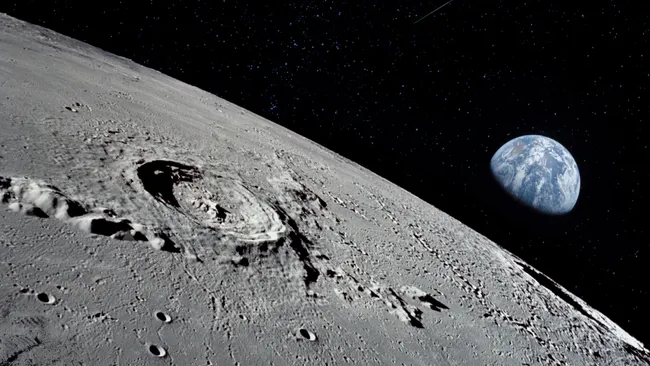When we think we know everything about our planet, something new often comes to light, altering our understanding. One such revelation is the Moon’s gradual drift away from Earth, a phenomenon that might seem insignificant but actually has profound effects on time. Contrary to the common belief that the Earth’s only natural satellite remains at a constant distance, recent scientific discoveries have unveiled an ever-weakening gravitational connection between Earth and the Moon. This gradual separation is causing the Earth to spin slower, resulting in longer days. While it might sound like a minor change, the implications are significant. The lengthening of days on Earth has profound effects on our planet’s climate, biological cycles, and even our daily lives. Understanding the science behind this drift and its historical context helps us grasp the broader impacts of this cosmic dance.
The Science Behind the Moon’s Drift
The relationship between Earth and the Moon is governed by gravitational forces. The gravitational pull of the Earth keeps the Moon in orbit, while the Moon’s gravity exerts a smaller but significant force on our planet. This interaction is dynamic and ever-changing. Most of us might recall high school science lessons where we learned about the gravitational bond between celestial bodies, but recent discoveries have shed new light on just how delicate and evolving this connection is. In recent years, scientists have observed an ever-weakening connection between the Earth and the Moon. This weakening is caused by the transfer of Earth’s rotational energy to the Moon, pushing it farther away. Currently, the Moon is receding from Earth at a rate of approximately 1.5 inches (3.81 centimeters) per year. This gradual drift is a direct consequence of the complex gravitational interactions and tidal forces at play. As the Moon moves away, it acts like a brake on the Earth’s rotation, causing our planet to spin more slowly and making our days longer. This phenomenon is akin to a spinning figure skater who slows down when they stretch their arms out. The energy transfer between Earth and the Moon results in a slow but steady increase in the length of our days. Historically, this means that days on Earth were much shorter millions or even billions of years ago. For instance, scientists believe that about 1.4 billion years ago, a day on Earth was only about 18 hours long. The study of these changes helps us understand not just the mechanics of celestial movements but also the intricate history of our planet’s geological and biological evolution.
Impact on Earth’s Rotation and Time
The Moon’s gradual drift away from Earth has a significant impact on our planet’s rotation. As the Moon moves further away, the Earth’s rotational speed decreases. This phenomenon results in the lengthening of days over geological timescales. To put this into perspective, scientists have determined that about 1.4 billion years ago, a day on Earth lasted only 18 hours. This increase in day length is a direct consequence of the complex gravitational interplay between the Earth and the Moon. One of the most fascinating aspects of this relationship is the analogy of a spinning figure skater. Just as a skater slows down when they extend their arms, the Earth’s rotation slows as the Moon recedes. This energy transfer between the Earth and the Moon is a subtle yet powerful force that has been shaping our planet’s history for billions of years. As days become longer, it impacts not only the length of our days but also has broader implications for our planet’s climate and biological cycles. The slowing rotation of the Earth affects the distribution of solar energy across the planet, influencing climate patterns and seasonal changes. Over millions of years, this gradual shift can lead to significant alterations in the Earth’s environment. Additionally, the lengthening of days influences the biological rhythms of living organisms. Many species have evolved to adapt to the specific length of days and nights, and changes in this cycle can affect their behavior, reproduction, and survival. In understanding these impacts, we gain valuable insights into the intricate dance of celestial bodies and their profound influence on life on Earth. The study of Earth’s rotation and its historical context not only helps us comprehend our past but also prepares us for potential future changes.
Astrochronology: Understanding Time Through Rocks
Astrochronology is a fascinating field that links astronomical theory with geological observation to understand Earth’s history. This method allows scientists to study ancient geological time scales by examining the layers of rock and sediment that have accumulated over billions of years. By correlating these geological records with astronomical phenomena, researchers can reconstruct the Earth’s past climate cycles and the behavior of celestial bodies. Professor Stephen Meyers and his team at the University of Wisconsin-Madison have been at the forefront of this research. In 2022, they conducted a groundbreaking study to look back at Earth’s past and recreate what the solar system might have looked like millions of years ago. By analyzing sediments from a 90 million-year-old rock formation, they uncovered crucial insights into the Earth’s climate cycles and the historical relationship between Earth and the Moon. The team discovered that the Moon’s influence on Earth’s rotation has been a significant factor in shaping our planet’s geological history. The sediments studied revealed patterns that correspond to the gravitational interactions between Earth and the Moon, providing a clearer picture of how these forces have evolved over time. This research highlights the importance of Astrochronology in understanding the complex interplay between celestial movements and geological processes. One of the key findings from Meyers’ study is the concept of using Astrochronology to tell time in the most distant past. By developing ancient geological time scales, scientists can study rocks that are billions of years old with the same precision as modern geological processes. This approach allows for a more comprehensive understanding of Earth’s history, offering insights into the long-term effects of astronomical phenomena on our planet. Astrochronology not only helps us understand the past but also serves as a valuable tool for predicting future changes. By examining the historical data encoded in Earth’s geological record, researchers can make more accurate forecasts about the potential impacts of ongoing astronomical shifts, such as the Moon’s gradual drift away from Earth.
Long-term Effects and Future Implications
The Moon’s gradual drift away from Earth and its impact on our planet’s rotation carry significant long-term effects and future implications. As days continue to lengthen, these changes will influence various aspects of our environment, climate, and life on Earth. One of the primary concerns is the potential impact on Earth’s climate. The distribution of solar energy across the planet is influenced by the length of days and nights. As days become longer, the way solar energy is absorbed and redistributed changes, potentially altering climate patterns. Over millions of years, these shifts can lead to substantial changes in weather patterns, ocean currents, and even the distribution of ecosystems. Understanding these changes is crucial for predicting and mitigating the effects of long-term climate variations. Another area of impact is the biological rhythms of living organisms. Many species have evolved to adapt to specific day lengths and seasonal cycles. Changes in the length of days can disrupt these natural rhythms, affecting behavior, reproductive cycles, and survival rates. For instance, plants rely on photoperiodism, the response to the length of day and night, to regulate flowering and growth. Similarly, many animals depend on day length cues for migration, mating, and other critical behaviors. As days become longer, these processes could be significantly disrupted, leading to ecological imbalances. The future implications of the Moon’s drift also extend to human activities. Our societies and technologies are intricately linked to the Earth’s rotational dynamics. For example, the synchronization of communication systems, satellite operations, and even daily activities depend on precise measurements of time and Earth’s rotation. Any changes in the length of days could require adjustments in these systems to maintain accuracy and functionality. In addition to practical concerns, the study of the Moon’s drift provides a deeper understanding of the Earth’s long-term evolution. By examining the historical data and projecting future trends, scientists can gain insights into the natural processes that have shaped our planet over billions of years. This knowledge is not only academically enriching but also essential for developing strategies to adapt to and mitigate the effects of these gradual yet profound changes.
**Comprehensive List of Tips:**
– Keep up with current scientific discoveries to expand your understanding of the world around you.
– Consider the long-term implications of seemingly minor changes in our planet’s dynamics.
– Explore the interconnectedness of celestial bodies and their impact on Earth’s climate and biological cycles.
– Use historical context to understand present-day phenomena and predict future changes effectively.
– Embrace interdisciplinary approaches, such as Astrochronology, to gain a deeper understanding of Earth’s past and future evolution.






